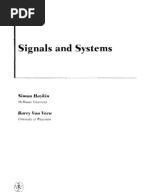Radar Systems By Bakshi Pdf
Several distinctive RADAR systems have been intended for different purposes, military and other. RADAR systems are fundamental to the route and following of specialty adrift and noticeable all around, climate expectation, and experimental exploration of numerous sorts. Introduction to radar systems by Skolnik PRINCIPLESIn fundamental RADAR, radio waves are transmitted from a recieving wire. These active waves in the long run skip off some far off item and return a reverberation to the sender, where they are gotten, enhanced, and prepared electronically to yield a picture demonstrating the article’s area. The waves conveyed might be either short oscillatory blasts (beats) or consistent sinusoidal waves. In the event that a RADAR transmits beats it is termed a heartbeat RADAR, though on the off chance that it transmits a persistent sinusoidal wave it is termed a nonstop wave RADAR.On closer examination, the RADAR procedure is seen to be more mind boggling.

Radar Systems By Bakshi Pdf Free Download
For instance, impression of a reverberation by the article one wishes to sense is definitely not direct. After leaving a transmitting recieving wire, a radio wave engenders in an extending bar at the velocity of light ( 186,000 miles for each hour 3 × 108 m/sec); in the event that it experiences a snag (i.e., a medium whose trademark impedance contrasts from that of air and vacuum 377 Ω), it parts into two sections. One section goes into the obstruction and is (by and large) consumed, and the other is reflected. Where the considered wave goes depends the state of the hindrance.
Radar systems textbook download. Roundish or sporadic deterrents tend to disseminate vitality through a wide edge, while level or feature like surfaces have a tendency to send it off in a solitary heading, pretty much as a level mirror reflects light. In the event that any part of the active wave is reflected at 180° (which is not ensured) it will come back to the transmitter. This returned or backscattered sign is normally recognized by the same radio wire that sent the active heartbeat; this reception apparatus exchanges quickly between transmitting heartbeats and listening for echoes, subsequently assembling a realtime photo of the reflecting focuses in scope of its pillar. The vitality the echoes get is a little division of that in the beats transmitted, so the quality of the transmitted heartbeat and the affectability of the beneficiary decides a RADAR’s reach. Radar systems Textbook by merrilli.
By methodicallly clearing the course in which its recieving wire is pointed, a RADAR framework can filter a much bigger volume of space than its pillar can question at any one minute; this is the reason numerous RADAR radio wires, on boats or on aviation authority towers, are seen to turn while.
RADAR SYSTEMS Questions and Answers pdf:-UNIT I:-1. Draw the block diagram of a Pulsed radar and explain its operation2. Write the relative factors between the radar’s cross section of the target and its true cross sections3.
Derive basic radar’s equation4. Explain about the frequencies used for radar5.
Discuss in detail the choice of various parameters that are affecting the radar range6. Derive the range equation and discuss about its limitations7. What do you understand by false alarm8. A pulsed radar operating at 10GHz has an antenna with a gain of 28dB and a transmitter power of 2KW. If it is defined to detect a target with a cross section of 12sq.m and the minimum detectable signal is Pmin= -90dBm. What is the maximum range of the radarUNIT II:-1.
What is meant by minimum detectable signal in radar. Discuss the effects of integration of radar pulses2.
What are the desirable pulse characteristics and the factors that govern them in a radar system3. Discuss about detection of signals in noise4. Describe the different noise components present in radar systems5. Explain about PRF and range ambiguities6. Explain about radar cross section of targetsUNIT III:-1.

Explain about Doppler effect2. Explain the operation of CW radar with neat block diagram3. Derive the expression for the velocity of the target when the target is moving away from the radar in the case FM-CW radar4. An 8GHZ Police radar measures a Doppler frequency of 1788HZ from a car approaching the stationary police vehicle in an 80 km/h speed limit zone.what should the police officer do?5. Differentiate the operation of pulse radar from simple CW radar6. Draw the block diagram of non coherent MTI radar and explain the function of each block in detail7.
Explain the advantages of non coherent MTI Radar8. Explain the applications of CW radar.9. Explain the principle of Doppler effect and its application CW radar.10.